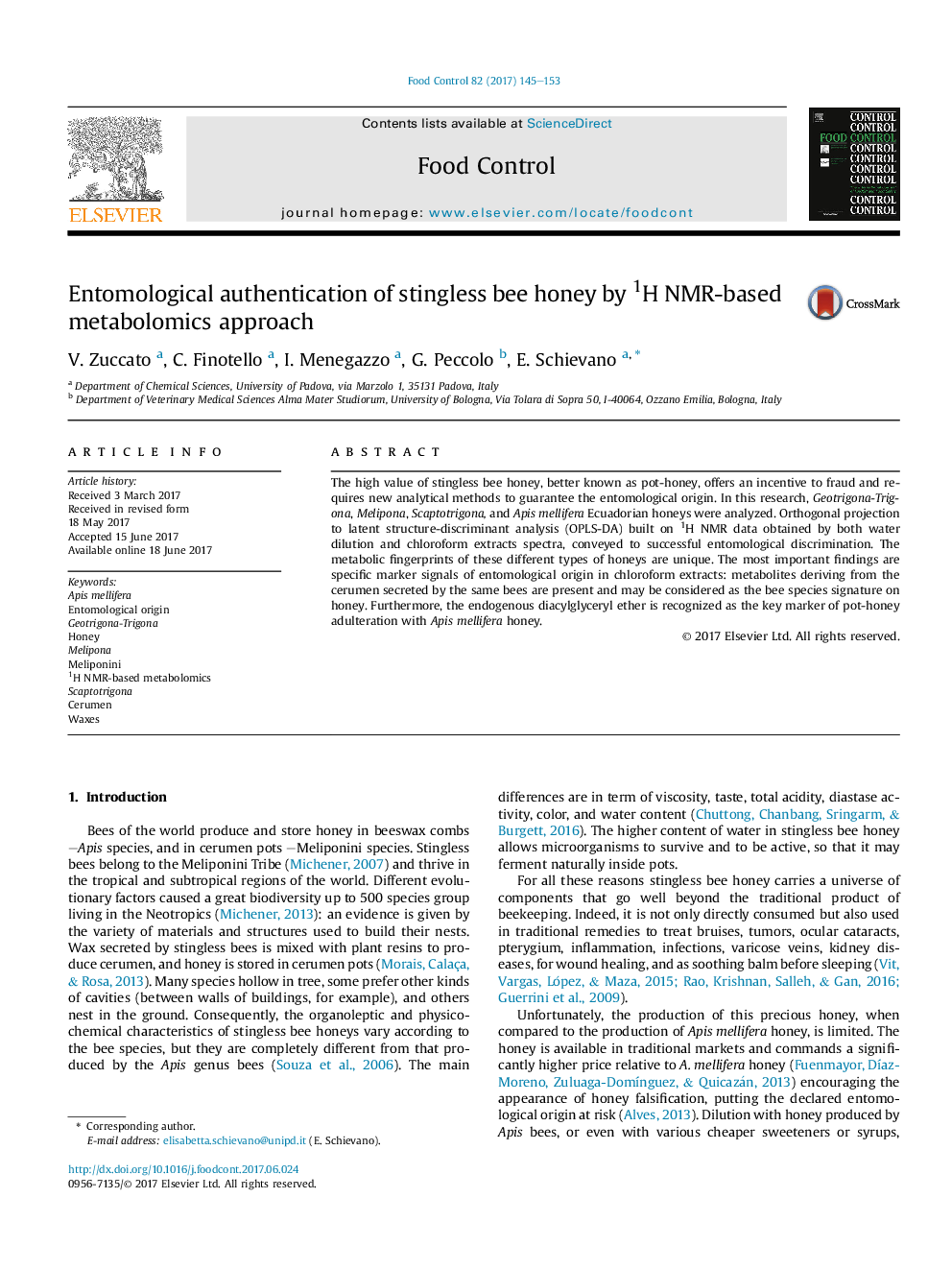| Article ID | Journal | Published Year | Pages | File Type |
|---|---|---|---|---|
| 5767144 | Food Control | 2017 | 9 Pages |
â¢Stingless bee and Apis mellifera honey: the NMR metabolic fingerprints are unique.â¢NMR-based metabolomics study successfully discriminates entomological origin of honey.â¢Cerumen traces in honey may be considered the bee species signature.â¢The Apis Mellifera diacylglyceryl ether is the key marker of pot-honey adulteration.
The high value of stingless bee honey, better known as pot-honey, offers an incentive to fraud and requires new analytical methods to guarantee the entomological origin. In this research, Geotrigona-Trigona, Melipona, Scaptotrigona, and Apis mellifera Ecuadorian honeys were analyzed. Orthogonal projection to latent structure-discriminant analysis (OPLS-DA) built on 1H NMR data obtained by both water dilution and chloroform extracts spectra, conveyed to successful entomological discrimination. The metabolic fingerprints of these different types of honeys are unique. The most important findings are specific marker signals of entomological origin in chloroform extracts: metabolites deriving from the cerumen secreted by the same bees are present and may be considered as the bee species signature on honey. Furthermore, the endogenous diacylglyceryl ether is recognized as the key marker of pot-honey adulteration with Apis mellifera honey.
